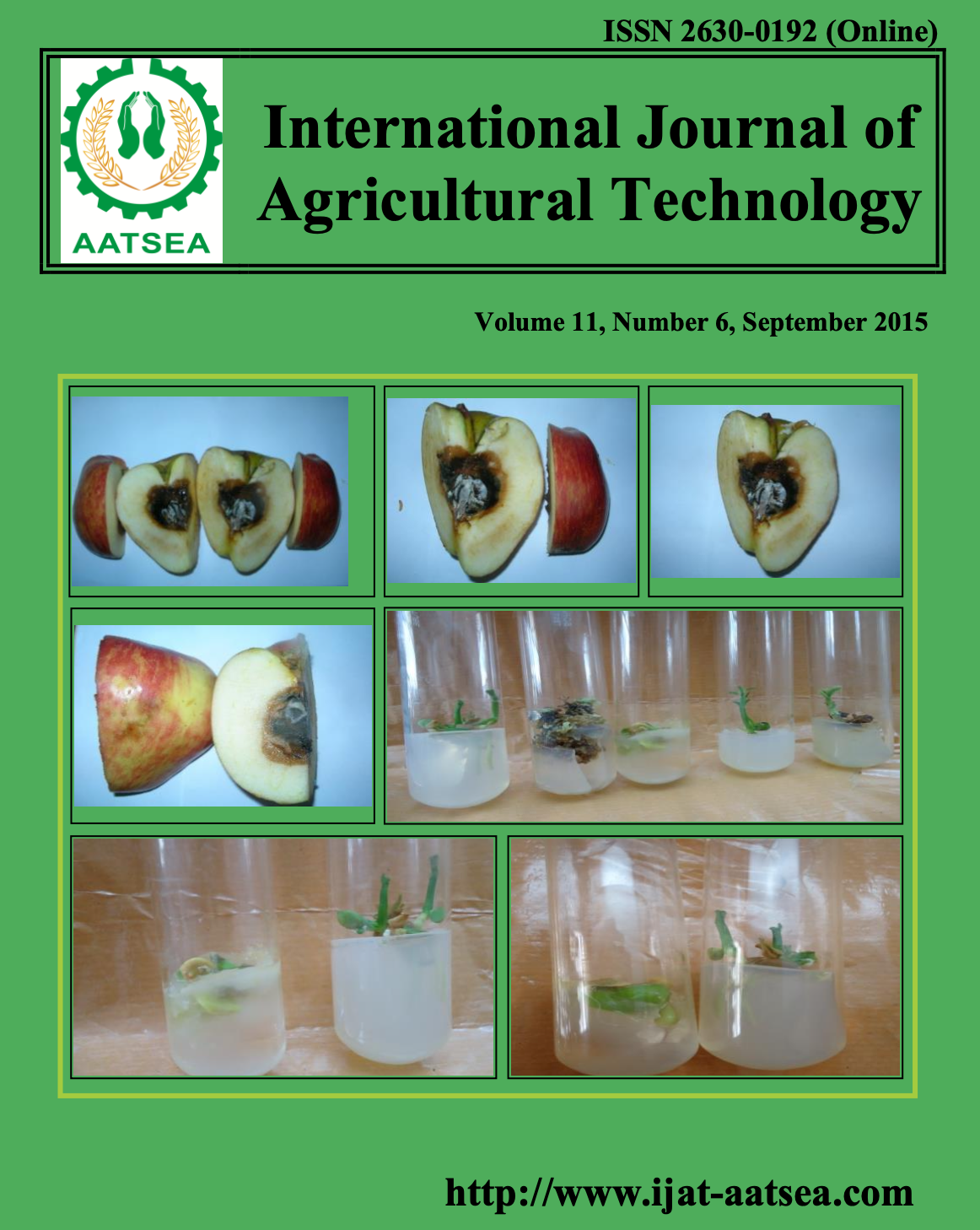Laboratory evaluation of chitin synthesis inhibitor Lufenuron in individuals mortality of subterannean termite Microcerotermes diversus (Silv.) (Isoptera : Termitidae) at different temperatures
Main Article Content
Abstract
Article Details

This work is licensed under a Creative Commons Attribution-NonCommercial-NoDerivatives 4.0 International License.
References
Abbot, W. S. (1925). A method of computing the effectiveness of an insecticide. Journal of Economic Entomology 18:265-267.
Al-Jassany, R. F. (1996). Evaluation of some physical measures and chlorofit 48% TC (Chlorrpyrifos) in protection building against infestation termite Microcerotertems diversus (Silv.). (Doctor of Philosophy’s Thesis). University of Baghdad.
Daiker, D. H. (2011). Evaluation of Diflubenzuron bait in the prevention of termite infestation new construction. Scientific Evaluation Section. Florida: Department of Agriculture and Consumer Services. pp. 1-10.
Delaplane, K. S., Saxton, A. M. and La Fage, J. P. (1991). Foraging phenology of the Formosan subterranean termite (Isoptera : Rhinotermitidae) in Louisiana. American Midland Naturalist 125:222-230.
Harverty, M. I., Su, N. Y., Tamashiro, M. and Yamamoto, R. (1989). Concentration – dependent presoldier induction and feeding deterrency potential of two insect growth regulators for remedial control of the Formosan subterranean termite (Isoptera : Rhinotermitidae). Journal of Economic Entomology 82:1370-1374.
Jones, S. C. and Lenz, M. (1996). Fenoxycarb – induced caste differentiation and mortality in Coptotermus formosanus. Journal of Economic Entomology 83:875-878.
Lelis, A. T. and Evaraets, C. (2004). Effects of Juvenile hormone analogues on Reticulitermes santonensis workers. Journal of Morphology 228:1523-1542.
Lenz, M., Gleeson, P. V., Miller, R. L. and Abby, H. M. (1996). How predictive are laboratory experiments for assessing the effects of chitin synthesis inhibitor (CSI) on field colonies of termite? A comparison of laboratory and field data from Australian mound – building species of termite. Proceedings of the 27th Annual Meeting of the International Research Group on Wood Preservation. pp. 1-12.
Rojas, M. G. and Morales – Rameos, J. A. (2004). Disruption of reproductive activity of Coptotermes formosanus (Isoptera : Rhinotermitidae) primary reproductive by three chitin synthesis inhibitors. Journal of Economic Entomology 97:2015-2020.
SAS Institute Inc. (2001). SAS / Stat Guide for personal computer. Version 6 ed. N.C. USA: SAS Institute.
Shabeen, L. (1997). So, what about termite baits , are they all they're cracked up to be ? Pest control 43-48.
Su, N. Y. and Scheffrahn, R. H. (1989). Comparative effect of an insect growth regulator , S-31183 against the Formosan subterranean termites and East subterranean termites (Isoptera : Rhinotermitidae). Journal of Economic Entomology 82:1125-1129.
Su, N. Y. and Scheffrahn, R. H. (1990). Potential of insect growth regulators as a termicide. A review Sociobiology 17:313-328.
Su, N. Y. and Scheffrahn, R. H. (1996a). A review of the evolution criteria for bait toxicant efficacy against field colonies of subterranean termite (Isoptera). Sociobiology 28:521-530.
Su, N. Y. and Scheffrahn, R. H. (1996b). Comparative effects of two chitin synthesis inhibitors , Hexaflumuron and Lufenuron in bait matrix against subterranean termite (Isoptera : Rhinotermitidae). Journal of Economic Entomology 89:1156-1160.
Su, N. Y., Tamashiro, M. and Harvety, M. I. (1985). Effects of three insects growth regulators feeding substrates and colony origin on survival and presoldier production of the Formosan subterranean termite. Journal of Economic Entomology 78:1259-1263.
Su, N. Y., Thomas, E. M., Ban, P. M. and Scheffrahn, R. H. (1995). A monitoring / baiting station to detect and eliminate foraging population of subterranean termite near structures. Journal of Economic Entomology 88:932-936.
den Meiracker Van, K. G., Zungoli, P. A., Benson, E. P. and Bridges, W. C. (2002). Hexaflumuron induced mortality in Reticulitermes flavipes and Coptotermes formosanus at constant and fluctuating temperatures (Isoptera: Rhinotermitidae). Biological Control 30:523-529.


